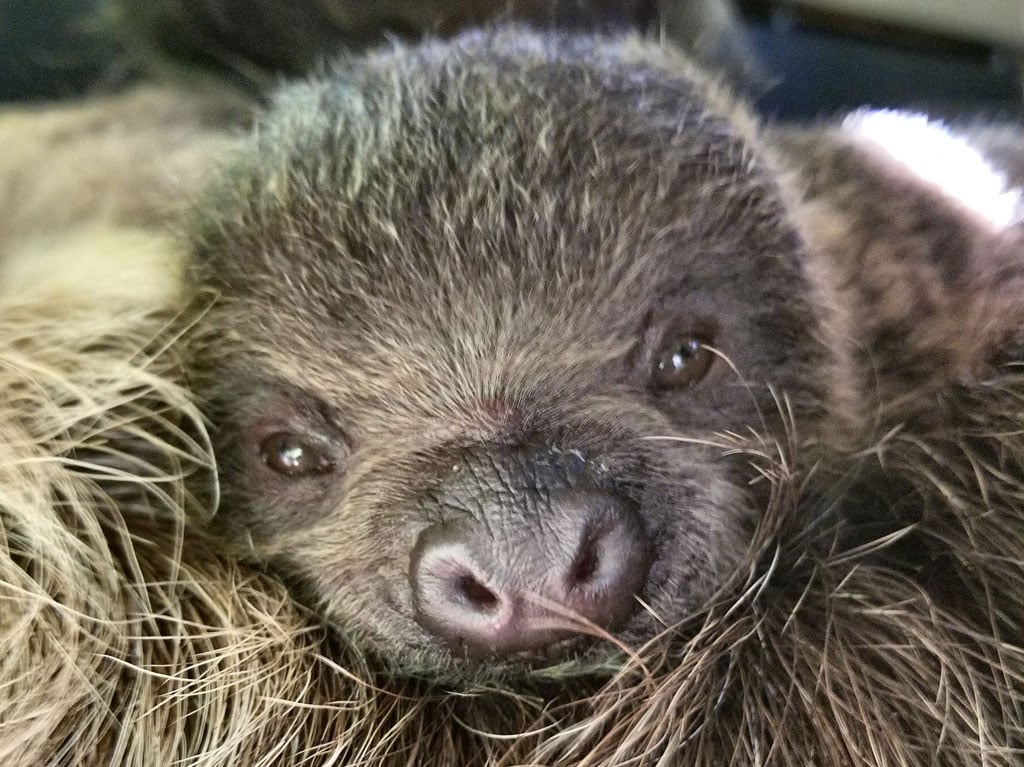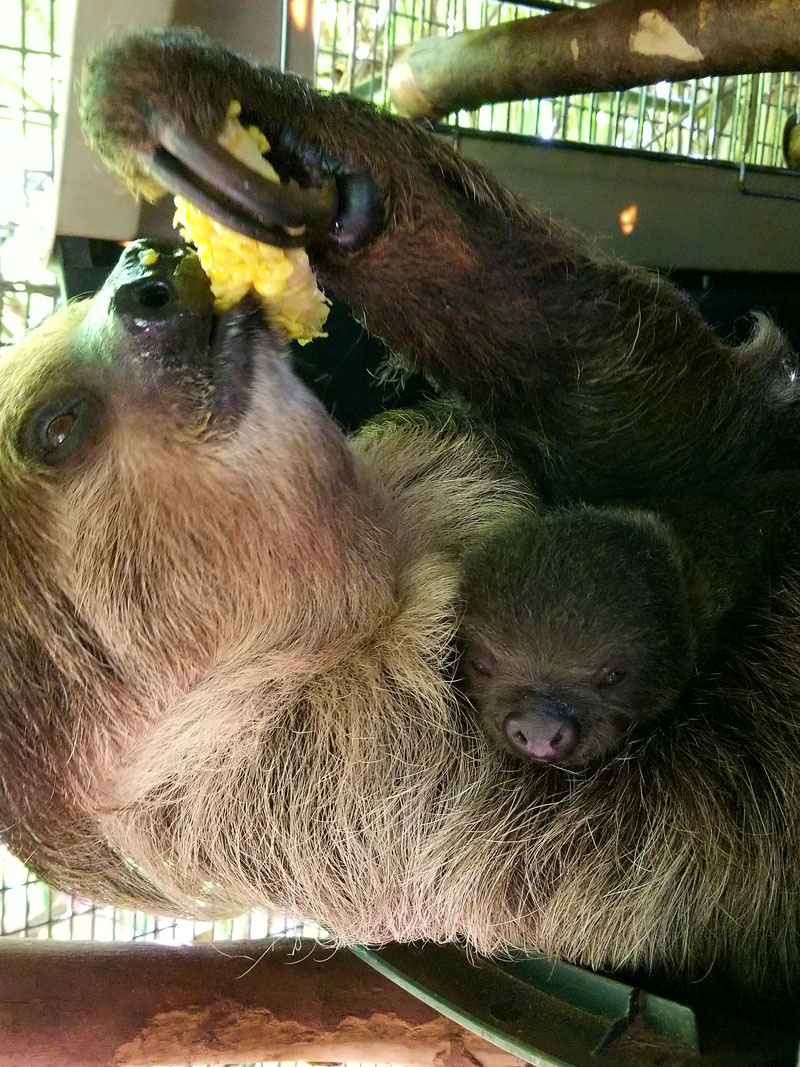There’s a New Baby Sloth at the Honolulu Zoo
The unnamed one-week-old joined its mother on exhibit today.

Photo: Courtesy City & County of Honolulu
A baby sloth at the Honolulu Zoo.
There is a new baby to see next time you stop by the Honolulu Zoo. The two-toed sloth was born on Monday, Sept. 18 and joined its mother in the exhibit on Friday, Sept. 22. Zoo staff will not be able to determine if it is male or female for a while, so the newborn will be nameless until then.

Photo: Courtesy City & County of Honolulu
The baby sloth will hold on to its mom for its first 9 to 12 months.
When you visit, look for the mom to spot the baby. It will stick with her for nine to twelve months before heading out on its own. The baby sloth is the third born to mom Harriet and father Quando in the last two years. Its two sisters, ‘Opihi and ‘ Ākala, were born on April 24, 2015 and July 17, 2016, respectively. Two-toed sloths do not easily breed in zoos, so this third child is significant to Honolulu Zoo’s pair.
Here are a few more facts about two-toed sloths from the Honolulu and San Diego zoos:
- Sloths are native to Central and South America. The lifespan in the wild is 15 to 20 years, but the mammals can live longer than 30 years in captivity.
- Sloths give birth to one baby at a time.
- Baby sloths cling to the mother’s abdomen immediately after birth. They nurse for 15 to 27 days, but then eat leaves they can reach from their position.
- Baby sloths will let out loud bleats if separated from their mothers. The sound is low and lasts about 30 to 90 seconds. Three-toed baby sloths, however, make distress calls that sound like whistles.
- The two-toed sloth is nocturnal and sleeps about 16 to 18 hours a day. It starts getting more active about an hour after sunset and winds down two hours before dawn.
- Sloths do everything hanging upside down, including sleeping, giving birth and eating. Their diet consists of mostly twigs, buds and fruit, but they may also eat a rodent or insect once in a while. Sloths digest at about the same speed as a tortoise.
- Most two-toed sloths change trees every night. They can climb at speeds of about 6 to 8 feet a minute, and can move twice as fast if stressed. On the ground, however, speeds slow down to less than a foot a minute. That’s because they must drag themselves with claws and forelimbs.
- Sloths belong to the same order as anteaters and armadillos. They have more in common with anteaters because both have a reduced number of teeth; Sloths have 18 teeth, anteaters have none.
- The Zootopia character Flash is apparently a three-toed sloth. (You can see three long, curved claws on his “hands” or front legs.) We’re guessing the filmmakers chose that family because three-toed sloths are also active during the day, so it was better for the storyline.
You can learn more about the Two-Toed Sloth with the San Diego Zoo’s Sloth Fact Sheet.








